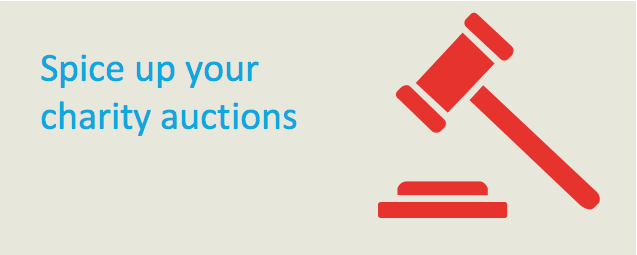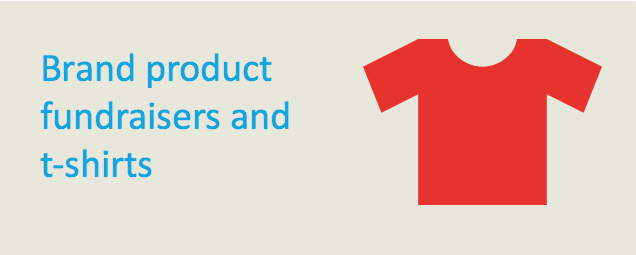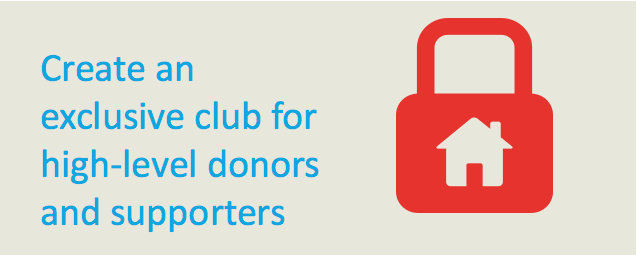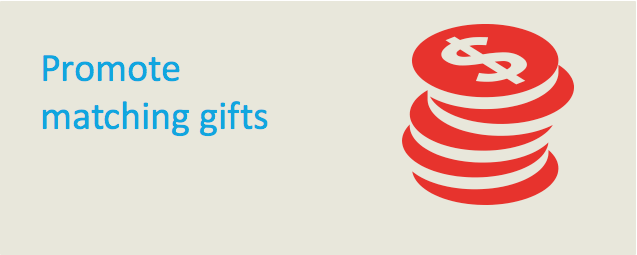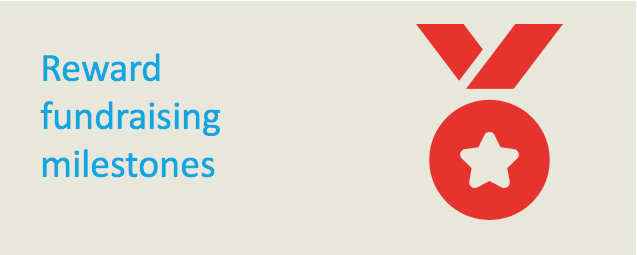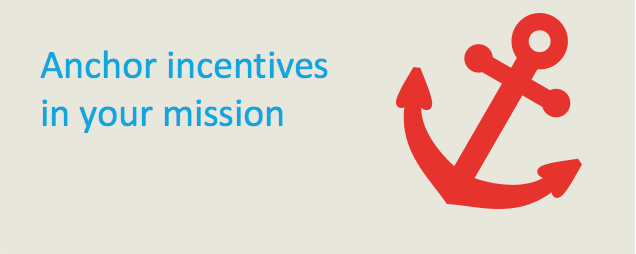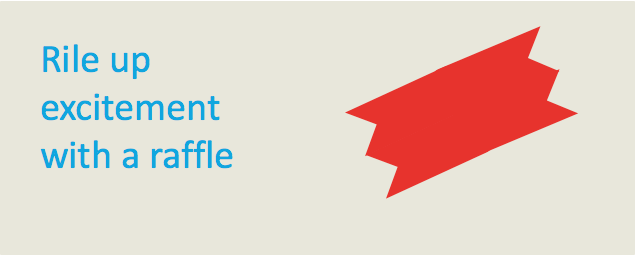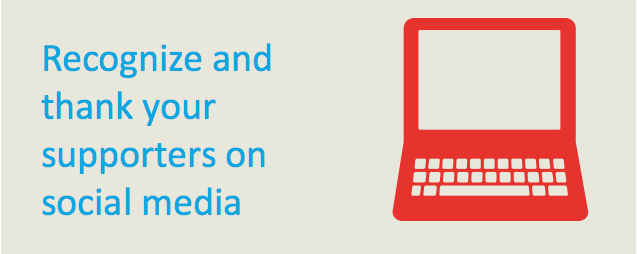Fundraising is a foundation of the nonprofit world. All the stress and hard work that goes into a fundraising campaign or event is worth it…if you receive a high enough return on your investment.
Using incentives ensures your fundraising efforts operate to their fullest extent.
Today we’ll look at 8 practical strategies to “sweeten the giving pot” for your two most important segments of supporters: donors and your fundraising team (including development staff, volunteers, board members and more).
Let’s get started with incentives for those that fuel your mission: your donors.
Incentives for donors
Effective donor incentives inspire and motivate more people to start donating, give larger donations than they normally would, and engage long-term with your nonprofit.
To help you achieve these three goals, we will cover 4 actionable strategies:
- Spice up your charity auctions.
- Brand your product fundraisers and t-shirts.
- Create an exclusive club for high-level donors and supporters.
- Promote matching gifts.
1. Spice up your charity auctions.
Though there are plenty of fundraising events to choose from, we’ll specifically focus on charity auctions in this article (If you’d like to learn about fundraising at other events, check out this Booster guide).
Auction items are an incentive all on their own. After all, if donors have the chance to bid on amazing items, they’ll be more likely to attend—and donate.
But you don’t want to rely on items alone. You need to create the best experience possible to incentivize enough donations to make a significant profit.
To maximize your charity auction incentive, follow these tips:
- Be strategic in seating. Knowing your attendees can help you plan a seating chart that will inspire more bidding. For example, two friendly business competitors who are seated next to each other might be inclined to out-bid each other. The competition then becomes its own incentive.
- Invest in high-quality items. Bidders are willing to pay top dollar for big-ticket and exclusive items like vacation and travel packages. To ensure you’re capitalizing on the incentive, try offering multiples of the same package, so even those who don’t win the bidding or are unable to attend the event can still contribute and make a quality purchase.
- Use professionals. A professional auctioneer can build excitement from your audience, creating a fun atmosphere that incentivizes more participation. Your auctioneer can also make a live appeal for donations. After all, everyone won’t be winning a bid, but they may still wish to contribute to your organization.
For more creative techniques to spice up your auction, check out “3 Techniques to Generate More Money from a Charity Auction.”
Following these tips can help you create incentive that goes beyond the auction items themselves. The entire event should motivate supporters to give to your organization.
{{cta(‘ace6904c-d5a9-4f23-afcc-36e09cf0f71e’,’justifycenter’)}}
2. Brand your product fundraisers and t-shirts.
Fundraising products are another type of incentive. After all, if you’re selling something that’s popular and useful, then people will be eager to donate.
Effective branding not only boosts the incentive to buy, but also generates deeper engagements with your donors.
After all, a brand is more than your nonprofit’s name or logo on a product. Your brand is the way that donors recognize and interact with your organization.
A popular brand is something that people want to be a part of, and purchasing your products gives them an “in.”
Think about the kind of fundraising campaign that you recognize; an annually occurring school or church fundraiser may come to mind. Do you, for example, remember selling popcorn door-to-door for your class or volunteering at the church bake sale in the early fall?
In both of these examples, there’s a sense of recognition and community. And as odd as it may seem, you can use these techniques in your branding strategy.
To do so, you can:
- Create branded t-shirts. Branded t-shirts that your supporters and donors can wear is a powerful visual testament to your nonprofit. Selling these t-shirts to supporters allows them to join your organization’s mission. Every time they wear your t-shirts, they make a public statement that they believe in your work.
- Time your fundraiser. Seasonal product fundraisers are “branded” by their respective holidays. You can capitalize on the recognition of candy canes or pumpkins by offering your nonprofit’s unique philanthropic twist on these seasonal favorites. You can also invest in an annual fundraiser that your supporters look forward to every year. Can anyone say Girl Scout Cookie season?
- Pair with P2P fundraising. Having your fundraising teams sell your products to their networks is the perfect way to brand your fundraiser around established connections and relationships. In the aforementioned t-shirt example, communities can band together when they wear their shirts. Plus, friends and family can show their support for the individual fundraiser by making a purchase.
Branding your nonprofit’s fundraising products and t-shirts can increase incentive as supporters donate to become a part of something bigger.
That “something bigger” is all a part of how your nonprofit presents itself to your community.
Ultimately, your branding can go beyond the products themselves and encompass the entire fundraising effort.
3. Create an exclusive club for high-level donors and supporters.
When it comes to major donors, incentives that appeal to their sense of generosity can be powerful motivators.
After all, major donors have demonstrated their desire to support your cause and your organization by making a significant gift. Likewise, your top supporters have already shown how much they value your organization in their volunteering or other contributions.
You can honor their dedication and incentivize future donors by creating an exclusive club of high-level donors.
This club can be a membership program, where donors who make a certain donation receive membership perks. These perks should emphasize the importance of your members’ roles in the organization and your gratitude for their gifts.
Perks can include:
- Invitations to upscale, members-only events.
- Premium event parking.
- Special volunteer opportunities or roles.
- Discounts in your nonprofit’s store.
Ultimately, you’ll want to emphasize the perks of joining together with other donors who feel strongly about your mission.
As this NeonCRM guide put it, “Try not to focus on superficial or materialistic benefits (like memorabilia branded to your organization or free parking), but instead those that offer donors something deeper and more meaningful.”
4. Promote matching gifts.
Matching gifts are corporate donations in which a company matches the gift of one of its employees. Many companies have matching gifts programs, and some will even match gifts at a rate above 1:1!
Matching gifts can incentivize larger and more numerous donations because donors enjoy seeing their donations doubled.
Remember, impact is incentive.
The opportunity to significantly increase the impact of their donation — and further support your cause — can motivate donors to give more and spread your campaign to their coworkers.
If you want to capitalize on matching gifts, you must inform your donors of the opportunity.
Promote matching gifts by incorporating them into your fundraising page and sending detailed information by mail or email to your supporters. Make it easy for them to seek out matching gifts from their companies.
Matching gifts are a great incentive because you not only motivate your donors to give more, but you also reap more funds for your campaign!
Incentives for your fundraising team
Now let’s discuss an equally important strategy: ways to incentivize your fundraising team.
Your hardworking staff, development team, volunteers, peer-to-peer fundraisers, online crowdfunders, board members and more all want to do right by your nonprofit. Otherwise, they wouldn’t actively support your mission.
Incentives help thank your team(s) for their hard work and keep everyone on track toward higher and higher goals.
Check out 4 more strategies geared specifically toward these invaluable supporters:
- Reward fundraising milestones.
- Anchor incentives in your mission.
- Rile up excitement with a raffle.
- Recognize and thank your team on social media.
Let’s get started with strategies geared toward motivating your team.
5. Reward fundraising milestones.
This strategy works especially well with peer-to-peer fundraising, where each person or team has an individual fundraising goal.
Create an incentive for reaching the minimum fundraising goal.
This incentive can be a simple product, such as a t-shirt, that brings supporters together. Everyone who meets their goal can, for example, wear their shirts during an upcoming event.
The incentive is not just the product itself, but the chance to demonstrate their dedication to your nonprofit.
To promote more fundraising beyond the minimum goals, offer more incentives at increasing intervals. Use both concrete numbers and concrete goals to motivate your supporters.
For example, those who raise $100 over the fundraising goal may receive an exclusive branded product. Those who raise $500 over may receive an invitation to a special nonprofit event.
At the top of the pyramid, offer a grand prize for your top fundraising team. Because this incentive doesn’t have a fundraising cap, your supporters can keep pushing for more funds for as long as the campaign lasts.
The actual prize is only one part of the equation; the competition is just as strong an incentive.
6. Anchor incentives in your mission.
If your fundraising team didn’t care about your mission, they wouldn’t be supporting your campaign.
Incentives that demonstrate the impact of your team’s work can:
- Validate the importance of their service.
- Connect them more deeply to the cause.
- Keep your fundraising efforts cause-oriented.
What kind of incentives can you create that focus on your mission?
Try offering:
- Testimonials. If you’ve ever seen an animal shelter offer a “sponsor a dog” campaign, then you’ll understand the gist of this incentive. Your fundraising team would, for example, receive the photo and story of the dog that their funds will help. The dog could sign the letter with a pawprint, and your team would see the tangible effects of their work.
- Behind-the-scenes opportunities. Show how your nonprofit really operates by offering an exclusive tour of your site or facility. Bring your teams on board to meet the recipients of their aid or watch your nonprofit in action. This tactic works especially well for organizations that can offer a unique experience to their supporters.
- Creative thank you cards. It’s one thing to receive a generic thank you card; it’s another to receive a personalized, hand-made card from someone that you’ve been wanting to help. Just image this scenario: a team member dedicated to raising funds for an after-school program receives a card in the mail, with a crayon drawing of the team member and one of the kids in the program. Can you say awww?
You can offer these incentives at various fundraising milestones, or you can pepper your campaign with mission-based motivators.
For instance, you can provide each individual fundraiser with a testimonial at the beginning of your campaign, but only offer behind-the-scenes opportunities to those who reach a certain high-level goal.
Remember: fundraising is about serving your mission. Anchoring your incentives in philanthropy will help keep your organization and fundraising teams focused on what really matters.
7. Rile up excitement with a raffle.
Why are raffles great incentives for your fundraising team?
Raffles are generally low-cost, exciting events that people love.
Depending on the size of your fundraising team(s) and the scope of your campaign, you can either offer a single grand prize for the raffle, or you can offer several prizes.
To implement a raffle into your campaign, you can offer a ticket per increment raised. For example, supporters receive a ticket every time they raise $100 dollars.
Or, you can offer a single raffle ticket for a high-value prize that the supporter earns once they’ve achieved a significant fundraising milestone.
Since you can also host the raffle as an event, you have the opportunity to celebrate your supporters in-person with a fun atmosphere, entertainment, and a chance to come together in support of your mission.
{{cta(‘b77d40eb-e9ec-4b49-8726-71f01ef94a99′,’justifycenter’)}}
8. Recognize and thank your team on social media.
The best incentive for hard work is recognition. After all, your supporters want to see that their fundraising efforts matter.
You can further motivate supporters during your fundraising campaign by highlighting individual fundraisers on social media.
Doing so not only reassures supporters that you appreciate their efforts, but it can inspire them to keep working.
One great idea: Set up a “Fundraiser of the Week” post where you feature a person who’s done great work for your nonprofit.
Tell their story, post their picture (encourage them to send a photo wearing your nonprofit’s branded t-shirt!), and encourage your followers to like and share.
Friends and family of the featured fundraiser are likely to share the post, generating more exposure for your nonprofit, all while recognizing the supporter in question.
Of course, you should recognize and thank all of your supporters.
But social media is a great way to add some extra incentive as supporters strive to reach the same fundraising heights as your featured team members.
Fundraising is a means to your mission, and incentives are an effective method for maximizing your efforts. They can motivate and inspire your core supporters, whether they be fundraisers themselves or donors to your campaign.
We hope this guide has given you practical takeaways and the incentive you need to get started!



